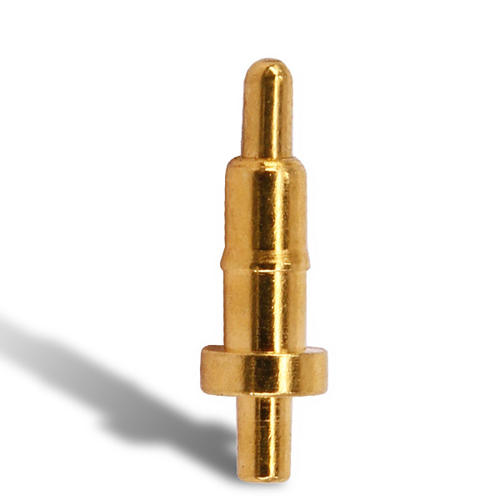Time:2025-09-27 Views:1 source:News

The laser scanning Pogo Pin is a specialized electrical contact component engineered to meet the high-precision, high-reliability demands of laser scanning systems—equipment widely used in industries such as manufacturing, 3D imaging, robotics, and quality inspection. Unlike standard Pogo Pins designed for general electrical connectivity, this variant is optimized to handle the unique requirements of laser scanning applications, including stable signal transmission for laser control signals, resistance to mechanical vibrations from scanning mechanisms, and compatibility with the compact, high-density layouts of modern laser scanning devices.
At the core of the laser scanning Pogo Pin’s design is its robust mechanical structure, which combines a spring-loaded plunger, a precision-machined barrel, and a highly conductive contact tip. The plunger is typically made from high-strength materials like stainless steel or beryllium copper, chosen for their ability to withstand repeated compression (up to hundreds of thousands of cycles) without losing elasticity—a critical feature, as laser scanning systems often operate continuously for extended periods, requiring consistent contact pressure. The contact tip, meanwhile, is plated with materials such as gold or palladium-nickel, which offer exceptional electrical conductivity and corrosion resistance. This plating ensures minimal signal loss when transmitting the low-voltage, high-frequency control signals that govern laser intensity, scanning speed, and beam positioning—signals that are essential for maintaining the accuracy of laser scanning tasks, such as 3D surface mapping or barcode reading.
One of the key advantages of the laser scanning Pogo Pin is its ability to maintain stable connectivity in dynamic environments. Laser scanning systems frequently involve moving parts (e.g., rotating scan heads or linear motion stages), which can cause vibrations or slight misalignments between components. The spring-loaded design of the Pogo Pin compensates for these small positional variations by applying a constant, uniform contact force—typically ranging from 50g to 300g, depending on the application—ensuring that the electrical connection remains intact even as the scanning mechanism operates. This stability is crucial for preventing signal interruptions, which could lead to scanning errors, distorted 3D models, or failed quality inspections.
Another critical feature is the Pogo Pin’s compatibility with high-density packaging. Modern laser scanners are often designed to be compact (e.g., handheld 3D scanners or embedded robotic scanners), requiring electrical components that occupy minimal space. The laser scanning Pogo Pin is engineered with a small form factor—with barrel diameters as small as 0.8mm—and can be arranged in tight arrays, allowing manufacturers to integrate multiple contacts (for power, signal, and data) within a limited footprint. This high-density capability supports the integration of advanced features in laser scanners, such as real-time data processing or wireless connectivity, without increasing the device’s overall size.
Durability is also a key consideration for laser scanning Pogo Pins. Many laser scanning applications take place in harsh environments, such as factory floors with dust, oil, or temperature fluctuations, or outdoor settings with exposure to moisture and UV radiation. To address this, the Pogo Pin’s barrel is often coated with materials like nickel or chrome to resist corrosion and abrasion, while the internal spring is sealed to prevent contamination by dust or liquids. Some models also feature a self-cleaning contact tip design, where the plunger’s movement wipes away any debris that may accumulate on the contact surface, further ensuring long-term reliability.
In practical applications, laser scanning Pogo Pins are used in a variety of critical scenarios. In automotive manufacturing, they enable connectivity between laser scanners and robotic arms, allowing for precise inspection of vehicle body panels for defects. In aerospace, they are integrated into 3D scanners used to measure the dimensions of aircraft components, ensuring compliance with strict safety standards. In consumer electronics, they power handheld 3D scanners used for creating digital models of objects, supporting industries like design, healthcare, and entertainment. Additionally, in logistics, they facilitate the operation of laser barcode scanners, enabling fast and accurate tracking of packages by maintaining stable connectivity between the scanner’s internal circuitry and its scanning module.
the laser scanning Pogo Pin is a vital component that enables the high performance, reliability, and compact design of modern laser scanning systems. Its ability to handle dynamic environments, support high-density packaging, and withstand harsh conditions makes it an indispensable solution for industries that rely on precise laser-based technologies. As laser scanning continues to advance—with trends like higher resolution, faster scanning speeds, and miniaturization—the demand for specialized Pogo Pins tailored to these needs is expected to grow, driving further innovations in materials and design.
Read recommendations: